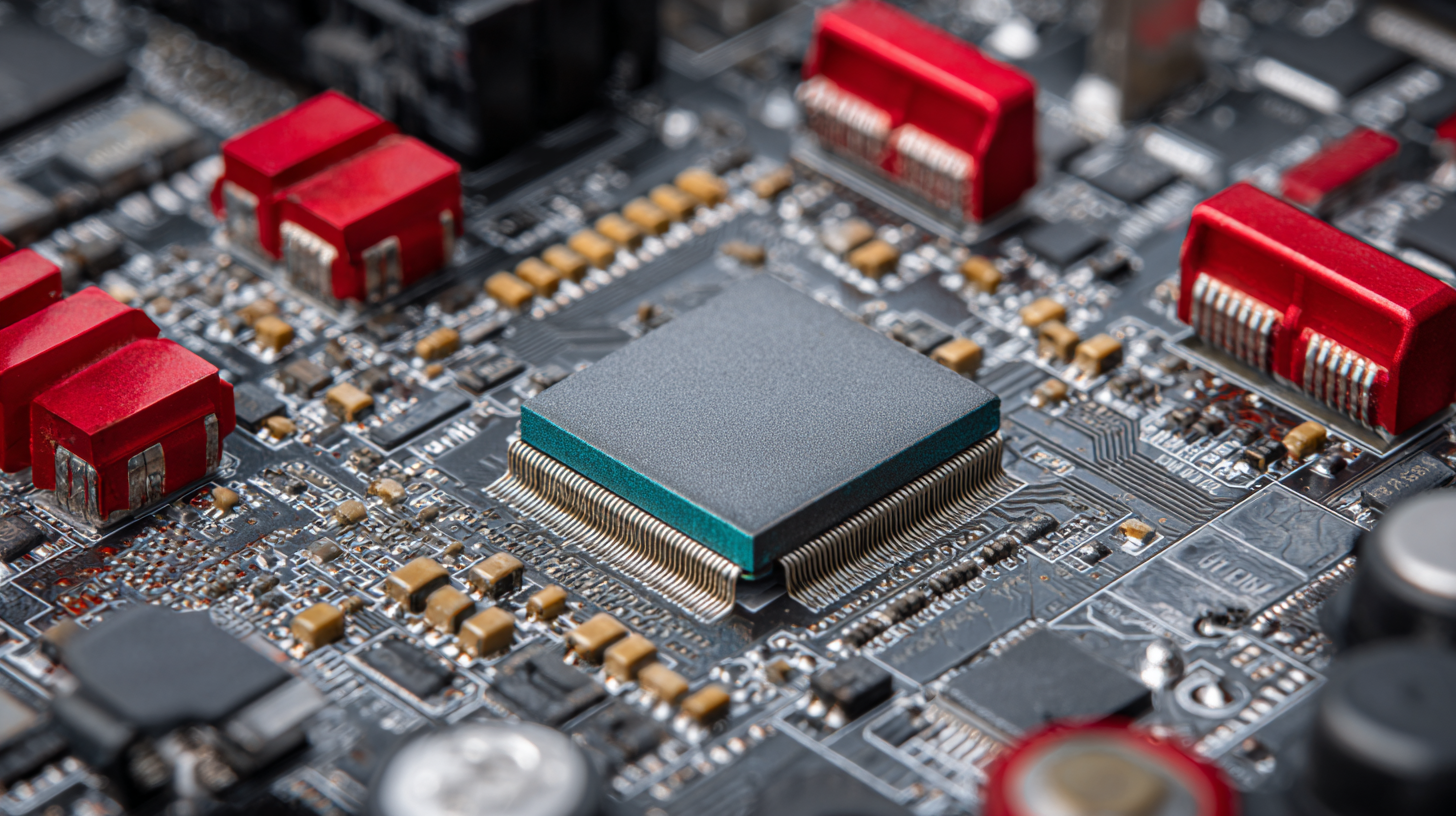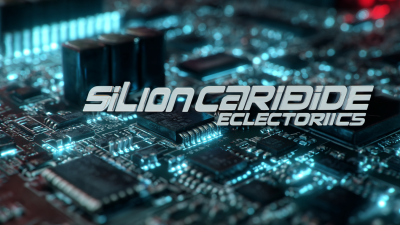 As the demand for energy efficiency continues to rise in the global market, Silicon Carbide Electronics have emerged as a transformative solution for various applications, particularly in power electronics and renewable energy systems. According to a recent report by Yole Développement, the SiC power device market is projected to reach $3.7 billion by 2025, reflecting a CAGR of 30%. This rapid growth underscores the advantages of Silicon Carbide, which offers superior thermal conductivity and higher breakdown voltage compared to traditional silicon technology. By harnessing Silicon Carbide Electronics, industries can significantly reduce energy losses, enhance performance, and contribute to sustainability efforts. As innovative designs and manufacturing processes continue to evolve, the integration of Silicon Carbide into power systems is expected to play a crucial role in achieving a more energy-efficient future.
As the demand for energy efficiency continues to rise in the global market, Silicon Carbide Electronics have emerged as a transformative solution for various applications, particularly in power electronics and renewable energy systems. According to a recent report by Yole Développement, the SiC power device market is projected to reach $3.7 billion by 2025, reflecting a CAGR of 30%. This rapid growth underscores the advantages of Silicon Carbide, which offers superior thermal conductivity and higher breakdown voltage compared to traditional silicon technology. By harnessing Silicon Carbide Electronics, industries can significantly reduce energy losses, enhance performance, and contribute to sustainability efforts. As innovative designs and manufacturing processes continue to evolve, the integration of Silicon Carbide into power systems is expected to play a crucial role in achieving a more energy-efficient future.
Silicon carbide (SiC) technology is rapidly revolutionizing the landscape of energy efficiency in power electronics. Unlike traditional silicon-based devices, SiC offers a number of advantages due to its superior thermal conductivity, high breakdown voltage, and excellent efficiency at elevated temperatures. According to a recent report by the International Energy Agency (IEA), SiC devices can achieve up to 20% greater efficiency than their silicon counterparts, an improvement that translates into significant energy savings and reduced operational costs for industries.
Utilizing SiC in power systems not only enhances efficiency but also enables smaller system designs due to its higher power density. As reported by the Power Electronics Research Group, the adoption of SiC technology could lead to a reduction in the size of power converters by 50%, paving the way for more compact and lightweight electronic devices. This is particularly crucial in applications like electric vehicles and renewable energy systems, where space and weight are critical factors.
Tips: When considering a shift to silicon carbide technology, start with a feasibility study to evaluate the specific needs of your application. Ensure you invest in training for your engineering teams to fully leverage the benefits of SiC devices. Additionally, collaborating with suppliers who have expertise in SiC can significantly enhance the integration process and optimize performance.
This chart displays a comparative analysis of energy efficiency among Silicon Carbide (SiC), traditional Silicon (Si), and Gallium Nitride (GaN) semiconductors. As shown, Silicon Carbide technology offers superior energy efficiency, making it an ideal choice for modern electronic applications.
Silicon carbide (SiC) electronics are revolutionizing the energy efficiency landscape by offering several key advantages over traditional semiconductor materials like silicon. One significant benefit is the ability of SiC devices to operate at higher voltages, frequencies, and temperatures. This not only enhances performance but also reduces the size and weight of power electronic systems, making them ideal for applications in electric vehicles and renewable energy systems.
Another advantage of silicon carbide is its superior thermal conductivity. This property allows SiC devices to dissipate heat more effectively, resulting in less energy loss and improved reliability. For engineers and manufacturers, this translates to lower cooling requirements and longer-lasting components, which are essential in maintaining energy efficiency throughout the product lifecycle.
**Tips:** When considering a transition to silicon carbide, evaluate your specific application requirements, such as operating temperature and voltage ratings. Additionally, invest in proper thermal management systems to fully leverage the heat dissipation benefits of SiC technology. Regularly review advancements in SiC manufacturing to stay updated on performance enhancements and cost reductions that can further boost your system's energy efficiency.

The global power electronics market is projected to expand significantly, with estimates suggesting a growth from $25.78 billion in 2024 to $43.42 billion by 2032, reflecting a compound annual growth rate (CAGR) of 6.7%. This surge in market size underlines the escalating demand for efficient power conversion systems, where silicon carbide (SiC) devices are becoming pivotal. SiC technology not only enhances the energy efficiency of power conversion but also optimizes performance across various applications, ranging from portable electronics to industrial control systems.

Particularly notable is the growth trajectory of the DC-DC converter market, expected to rise from an estimated $982.1 million in 2023 to approximately $2.015 billion by 2033, with a remarkable CAGR of 9.4%. In light of these trends, ensuring the efficiency and reliability of DC-DC power converters is a critical endeavor. Incorporating SiC devices can dramatically improve power conversion efficiency, making them essential components in modern electronic architectures. As market demands rise, harnessing SiC technology can lead to significant advancements in energy efficiency across multiple sectors.
Integrating Silicon Carbide (SiC) electronics into renewable energy solutions represents a pivotal advancement toward achieving superior energy efficiency. The unique properties of SiC, such as its high thermal conductivity, wide bandgap, and robust electrical performance, make it ideal for applications in solar inverters, wind turbines, and electric vehicle chargers. As the renewable energy sector continues to expand, the ability of SiC devices to operate at higher voltages and temperatures translates into reduced energy losses and enhanced power conversion efficiency.
According to a recent market analysis, the global silicon carbide semiconductor market is projected to reach USD 11,783.1 million by 2033, growing at a remarkable CAGR of 18.5%. This growth is fueled by the increasing adoption of renewable energy systems and the need for advanced semiconductor technologies. As industries strive for energy conservation and sustainability, the integration of SiC electronics in renewable energy solutions not only contributes to reduced carbon footprints but also fosters innovation in energy management systems, enabling a more efficient and sustainable future.
| Parameter | Value | Description |
|---|---|---|
| Bandgap Energy | 3.26 eV | Indicates the energy level needed for electron transition in SiC. |
| Thermal Conductivity | 3.5 W/(m·K) | Efficiency in conducting heat away from junctions. |
| Breakdown Voltage | > 10 kV | The maximum voltage that the device can withstand without failure. |
| Switching Frequency | > 100 kHz | The frequency at which the device can switch on/off effectively. |
| Efficiency Improvement | 30% - 50% | Percentage increase in efficiency when using SiC compared to Si. |
| Operating Temperature | -40°C to 200°C | The range of temperatures over which SiC devices can operate effectively. |
The adoption of silicon carbide (SiC) in industrial applications is becoming increasingly vital as energy efficiency takes center stage, particularly with the rise of electric vehicles (EVs).
Industry reports indicate that the demand for SiC power electronics is expected to grow at a CAGR of over 30% through 2025, driven largely by the automotive sector.
As manufacturers navigate the shift towards a more sustainable energy landscape, implementing best practices for SiC integration can enhance operational efficiency and product performance.
One of the emerging best practices is the establishment of localized manufacturing facilities, which can significantly reduce supply chain disruptions while addressing the rising tariffs on imported semiconductor components. Recent developments include the groundbreaking of India’s first SiC manufacturing unit in Odisha, which underscores a strategic move to bolster domestic production capabilities.
Additionally, firms are leveraging technological advancements to optimize their SiC wafer production processes, ensuring they meet the increasing market demand while maintaining cost-effectiveness.
Furthermore, financial commitments such as substantial investments in SiC fabrication facilities signal a growing confidence in this technology. For instance, the U.S. government’s funding initiatives are enhancing the manufacturing capabilities of domestic players, ensuring they can efficiently respond to the rising demand driven by sectors like renewable energy, telecommunications, and automotive.
As these trends continue, practices centered around strategic partnerships, localized manufacturing, and innovative research will prove crucial in harnessing the full potential of silicon carbide for industrial applications.






